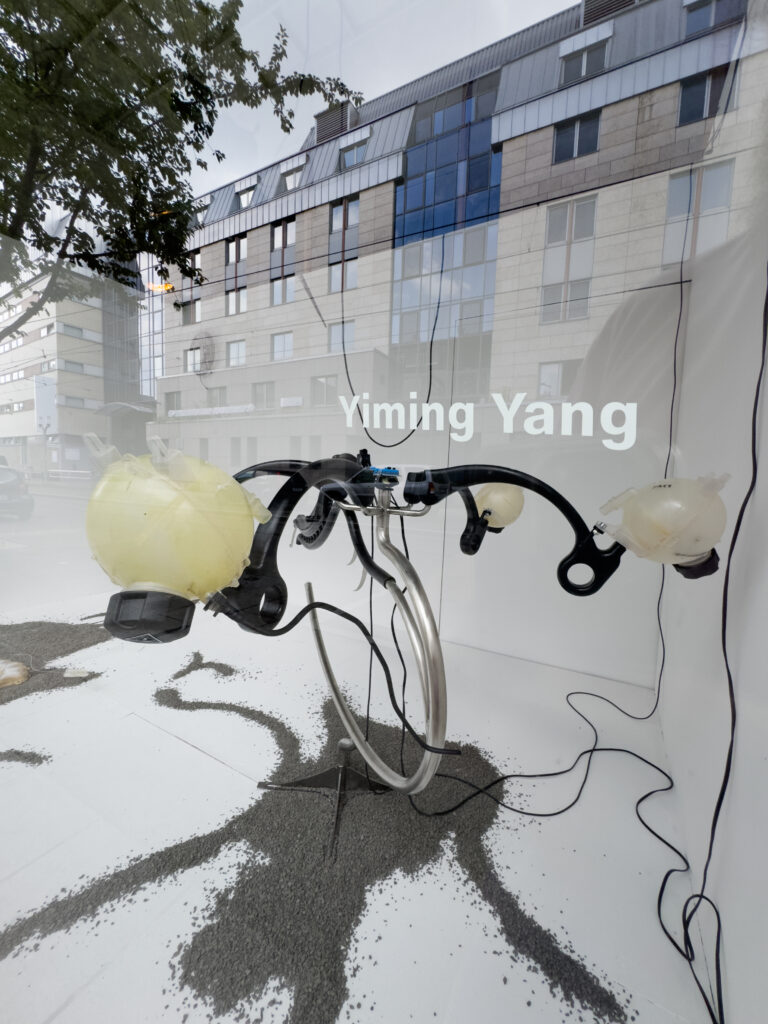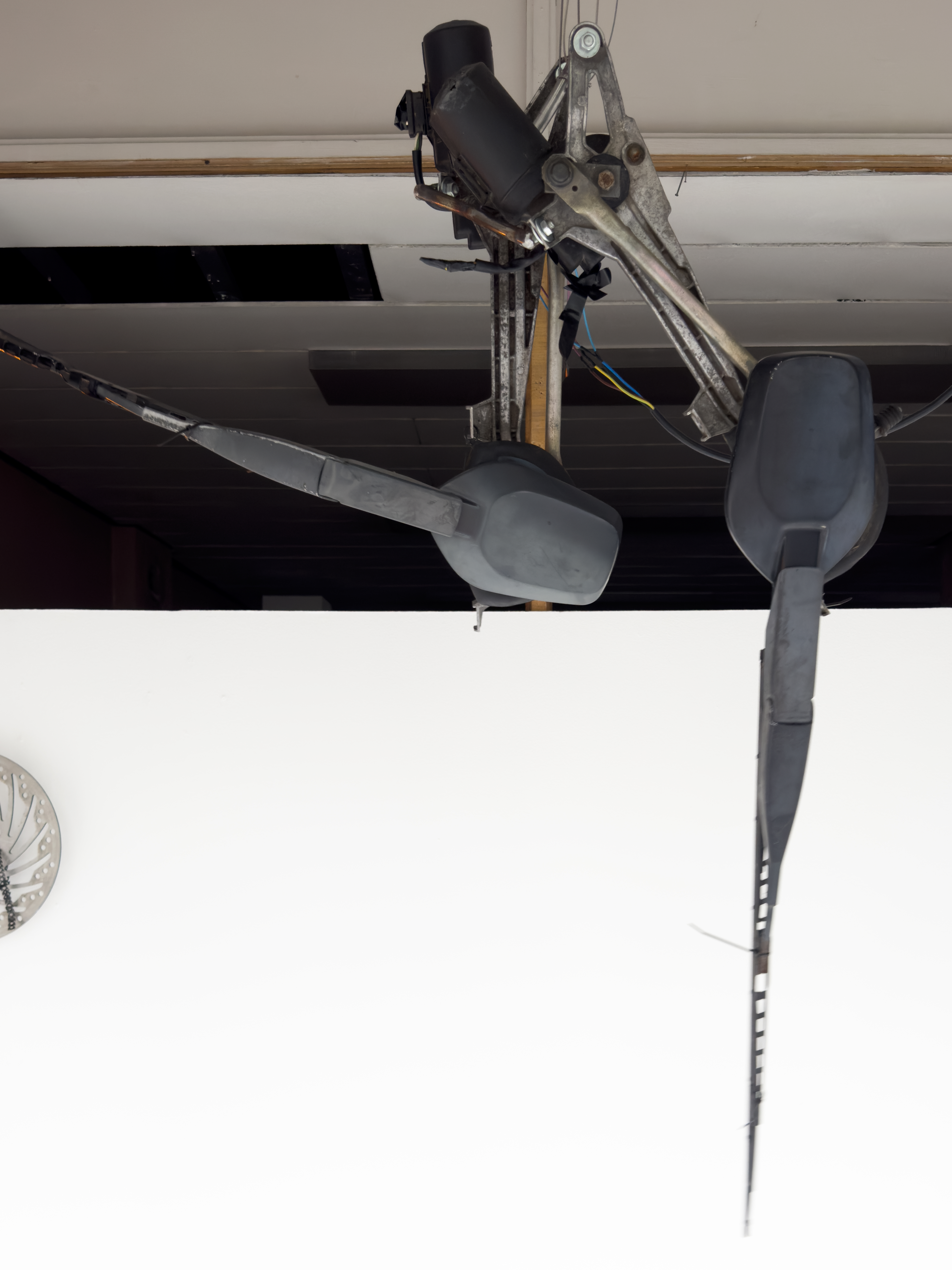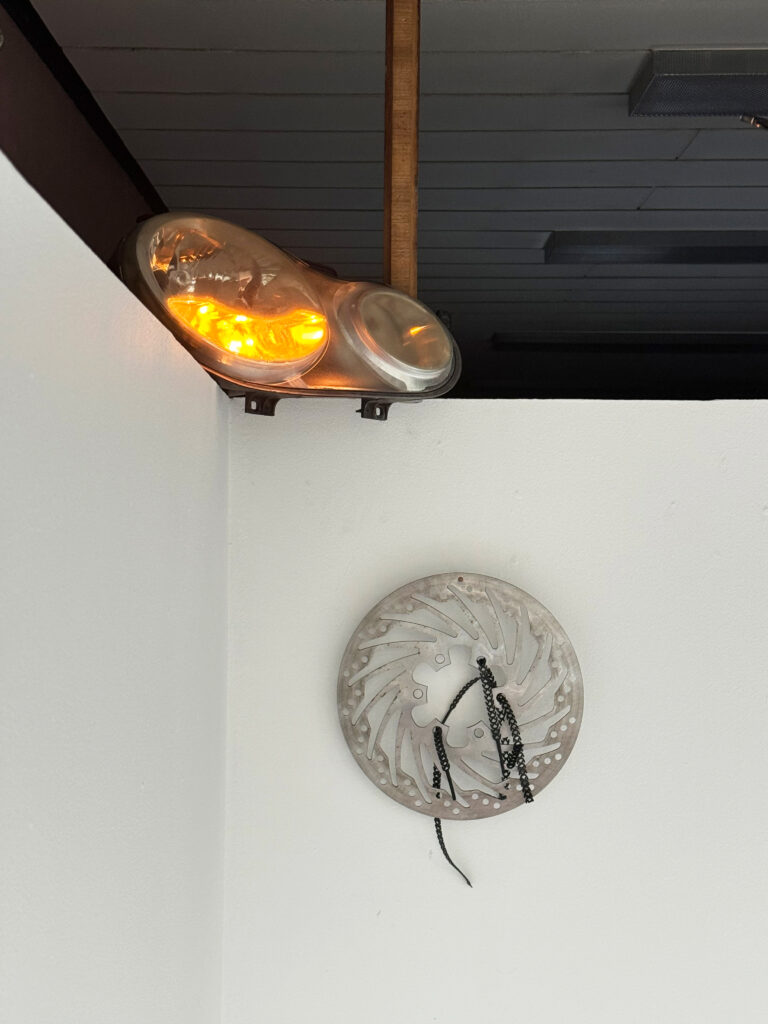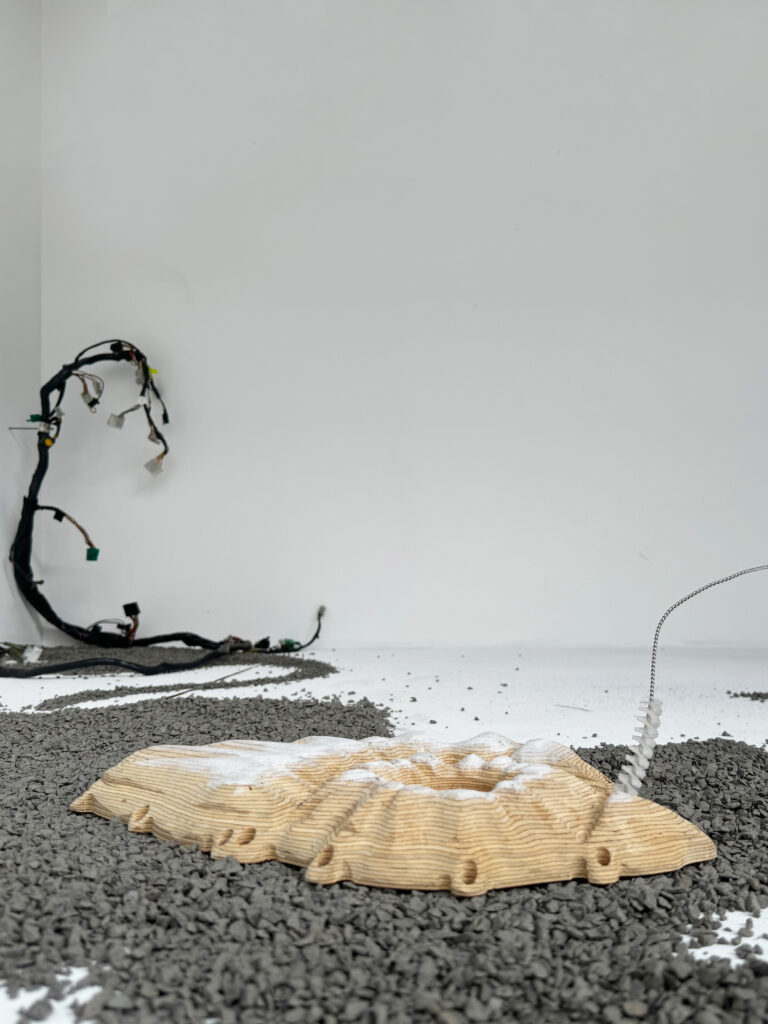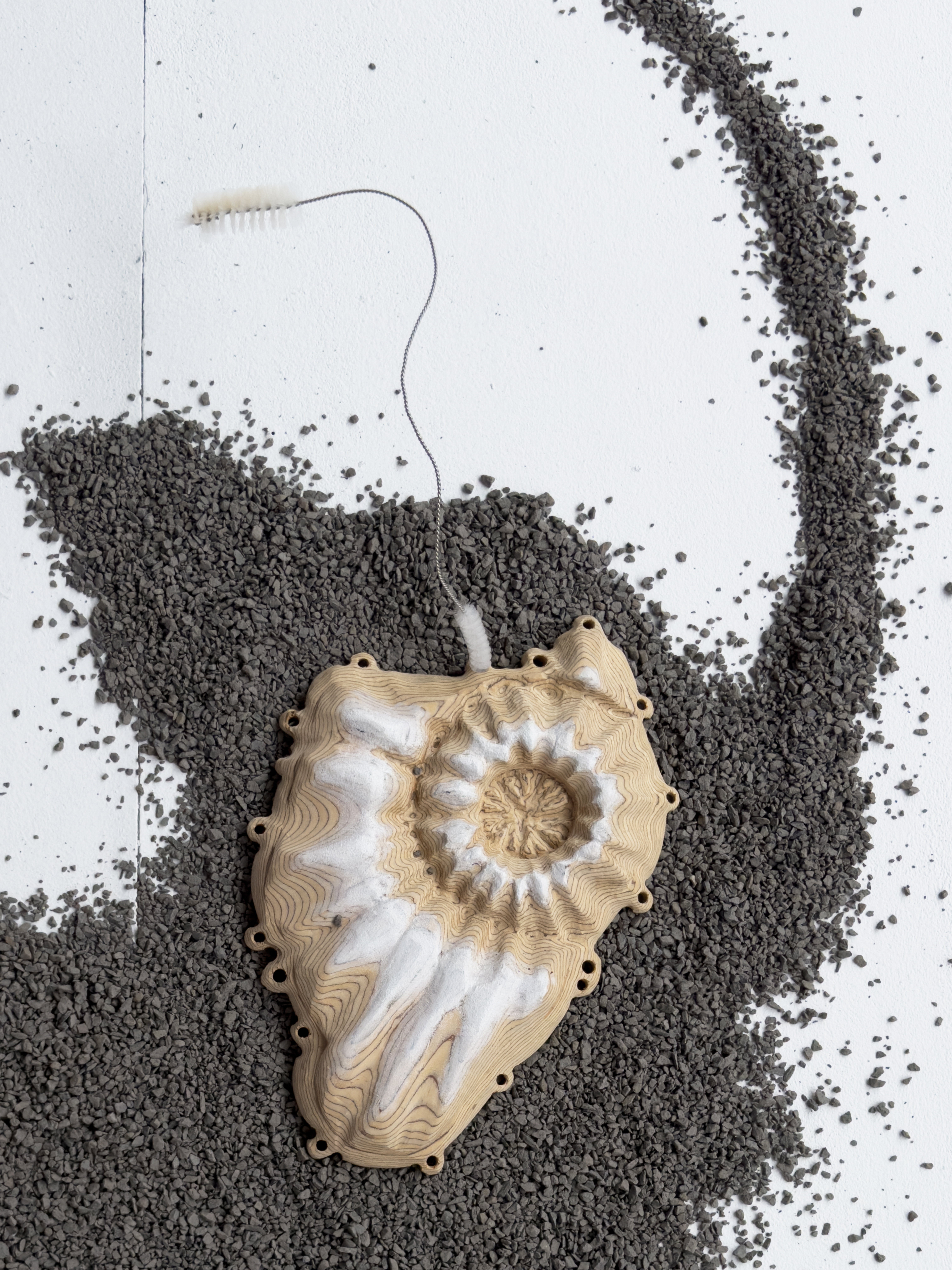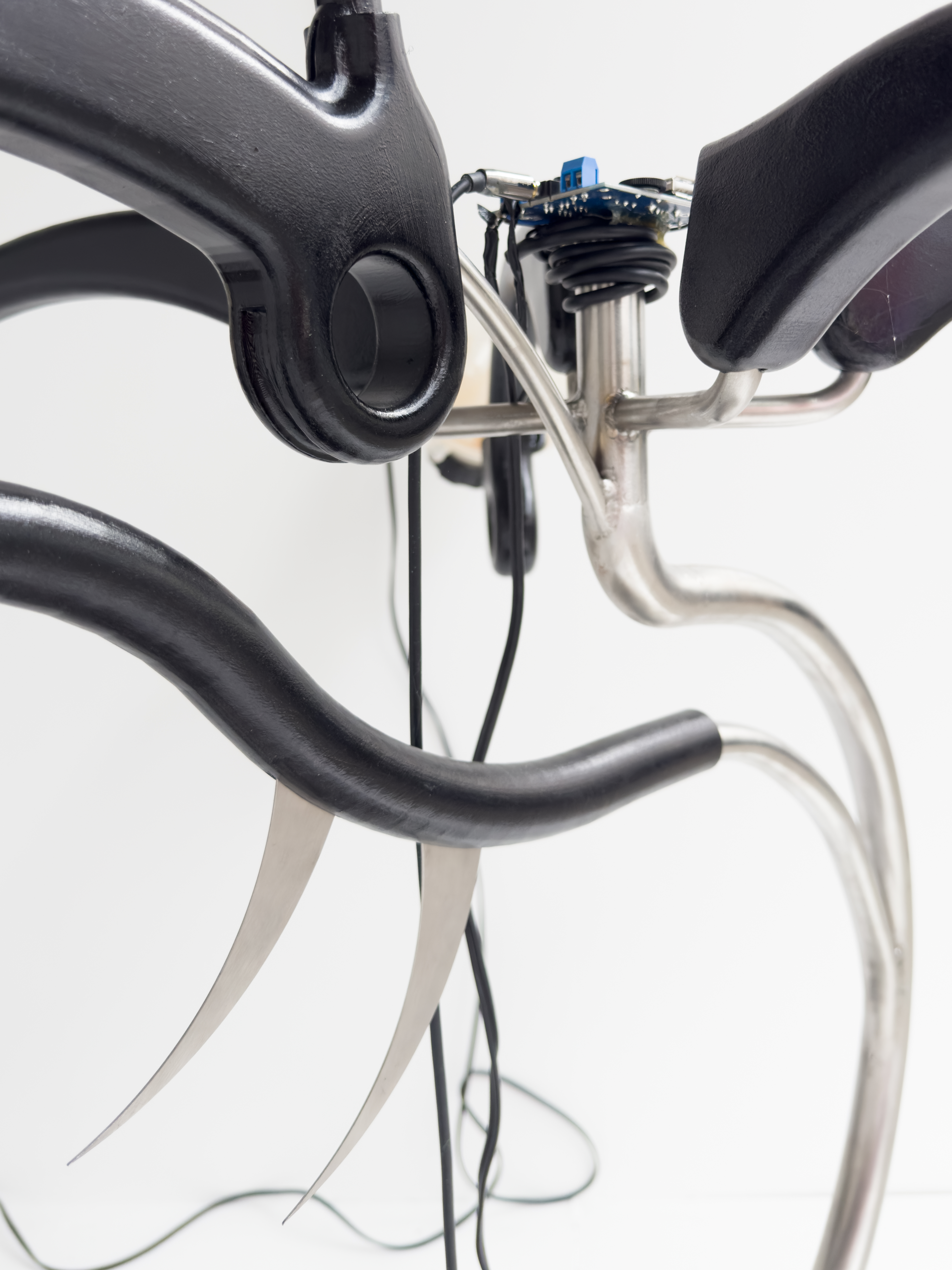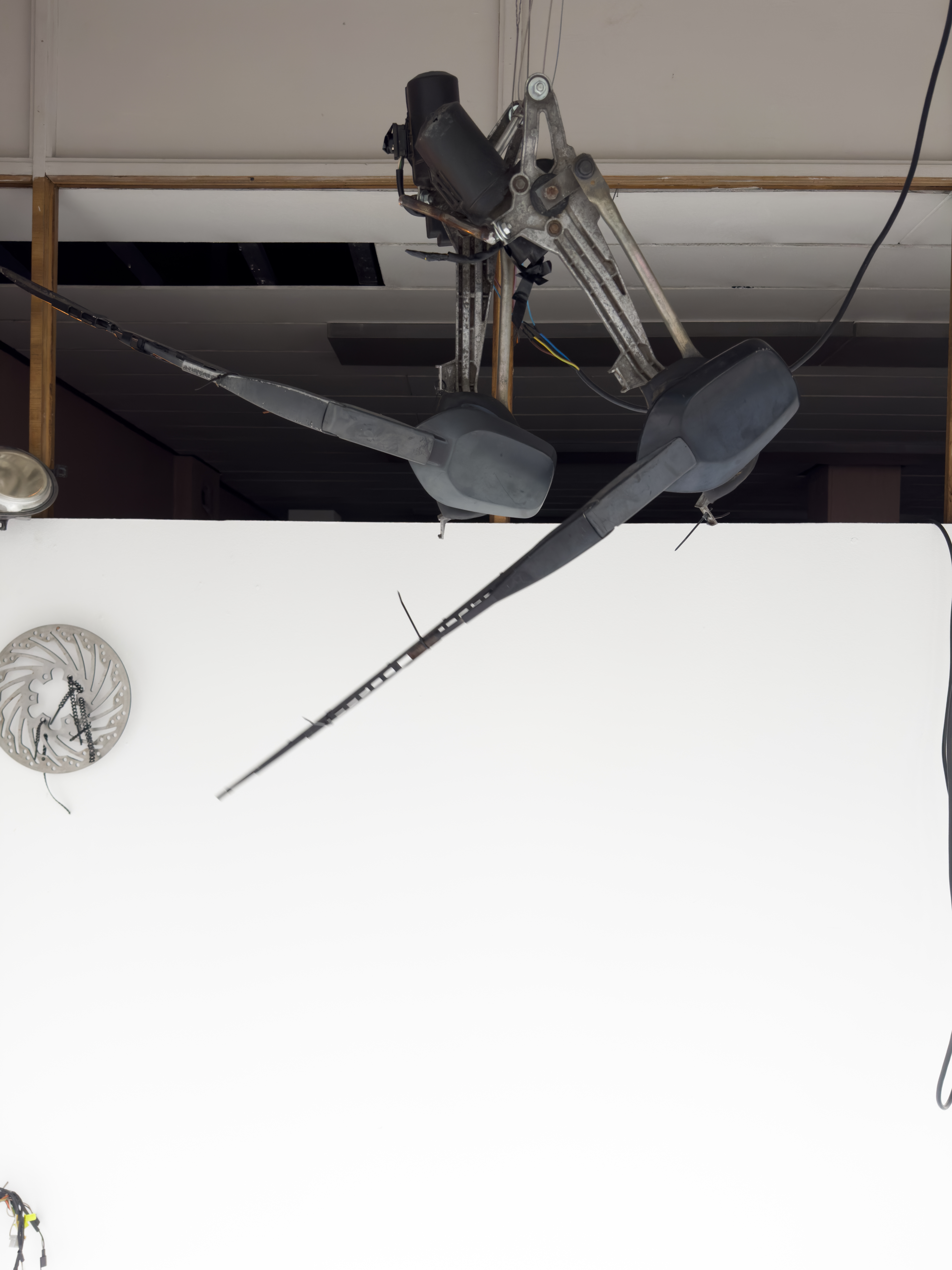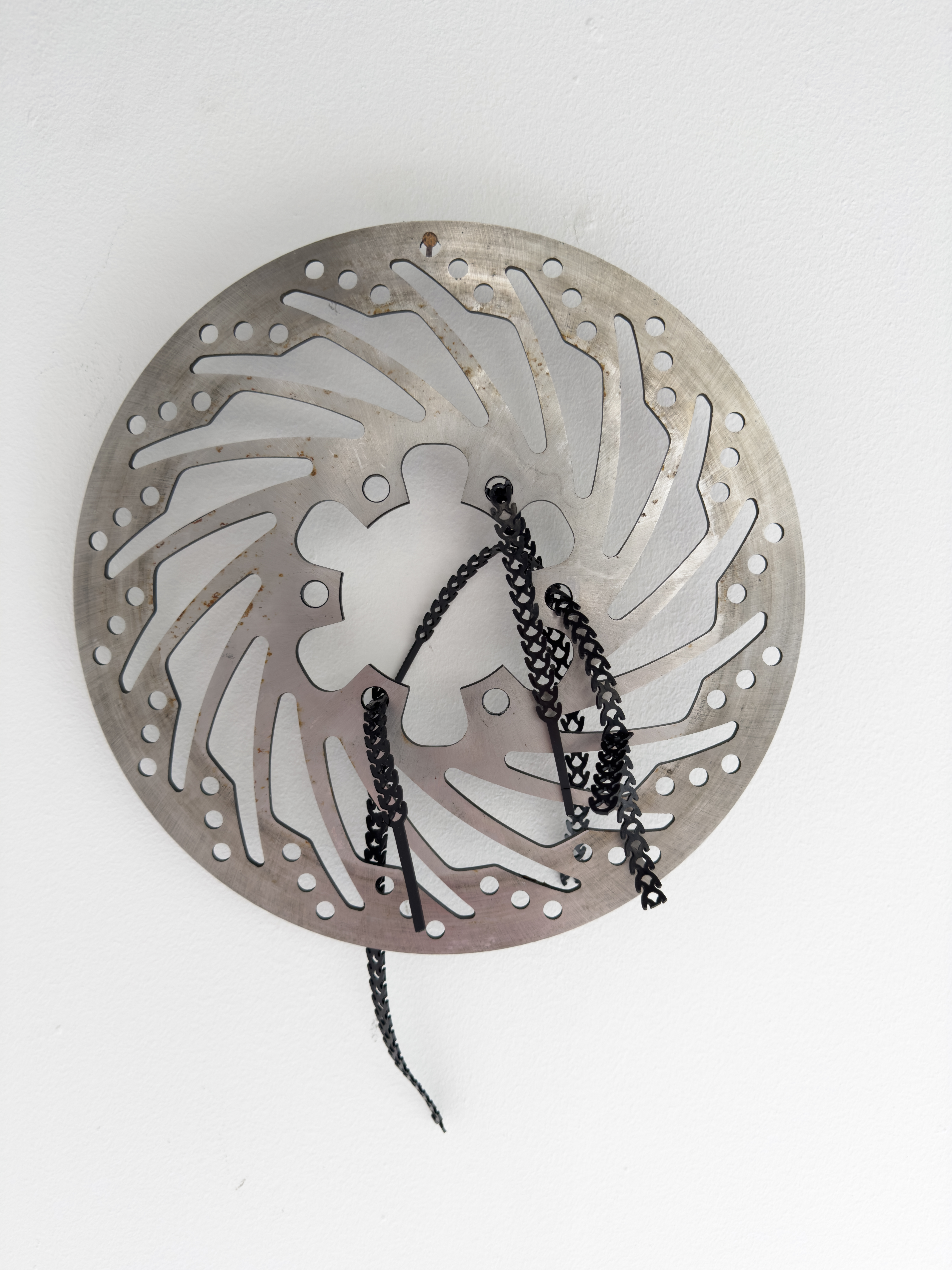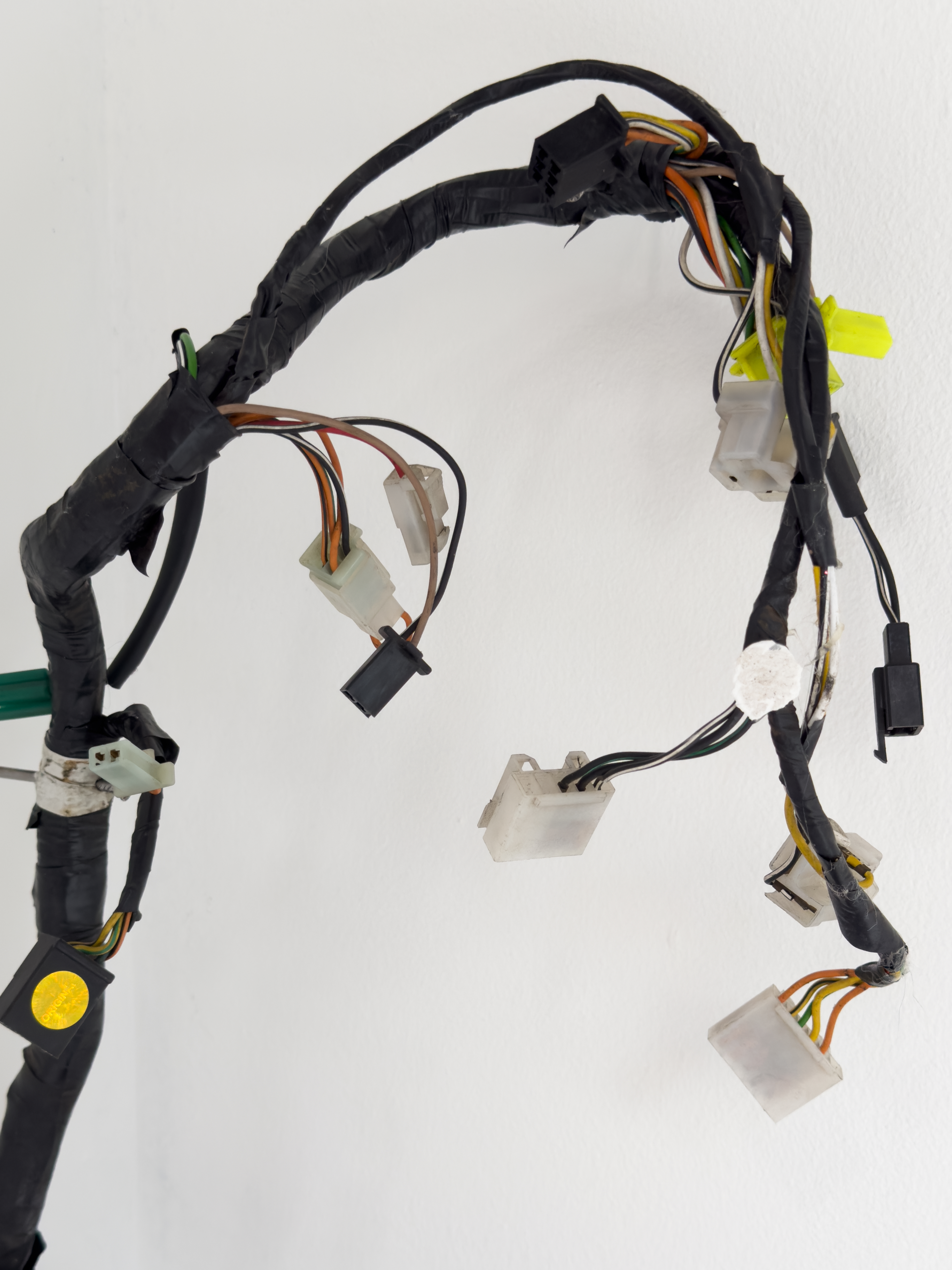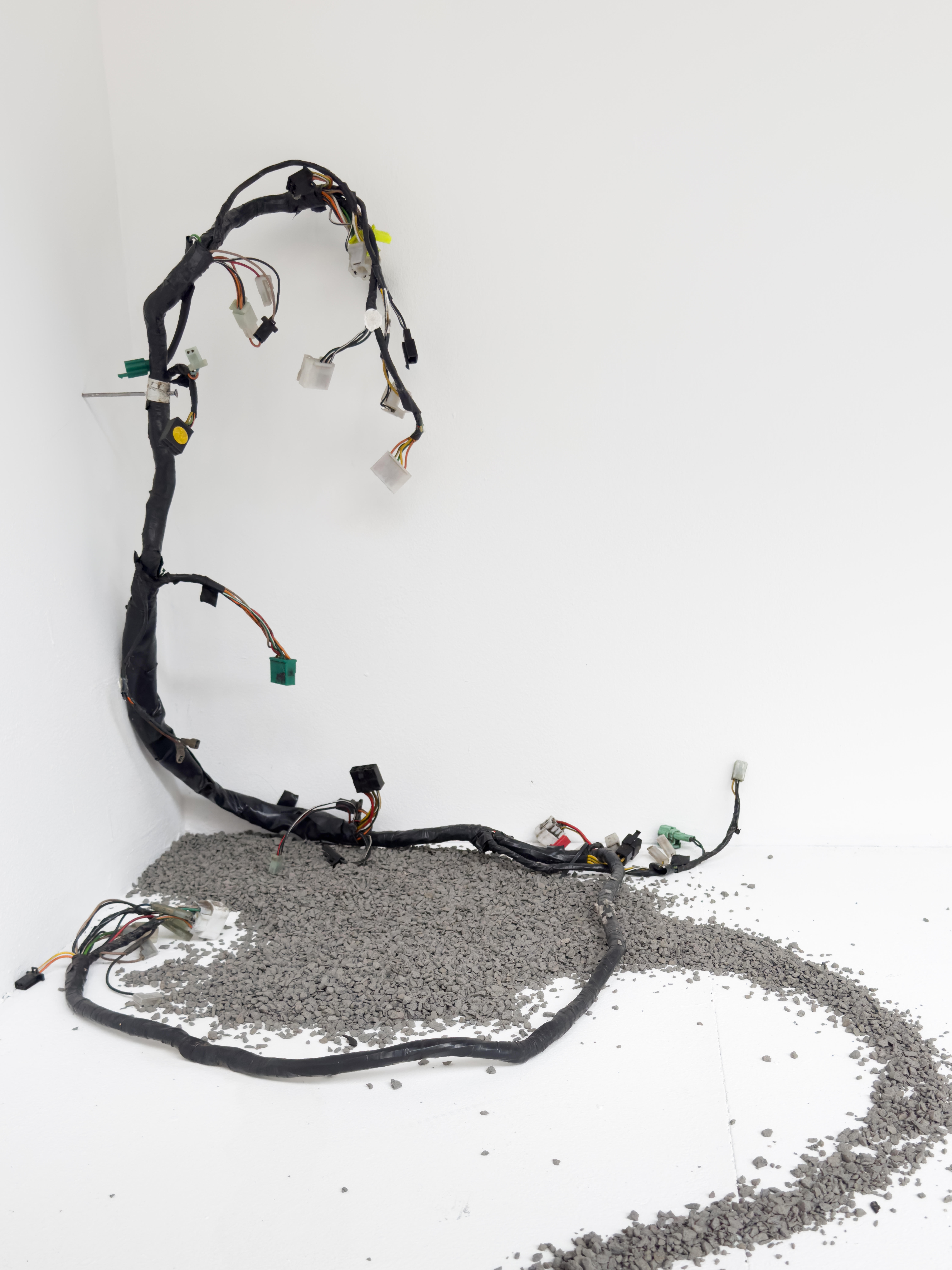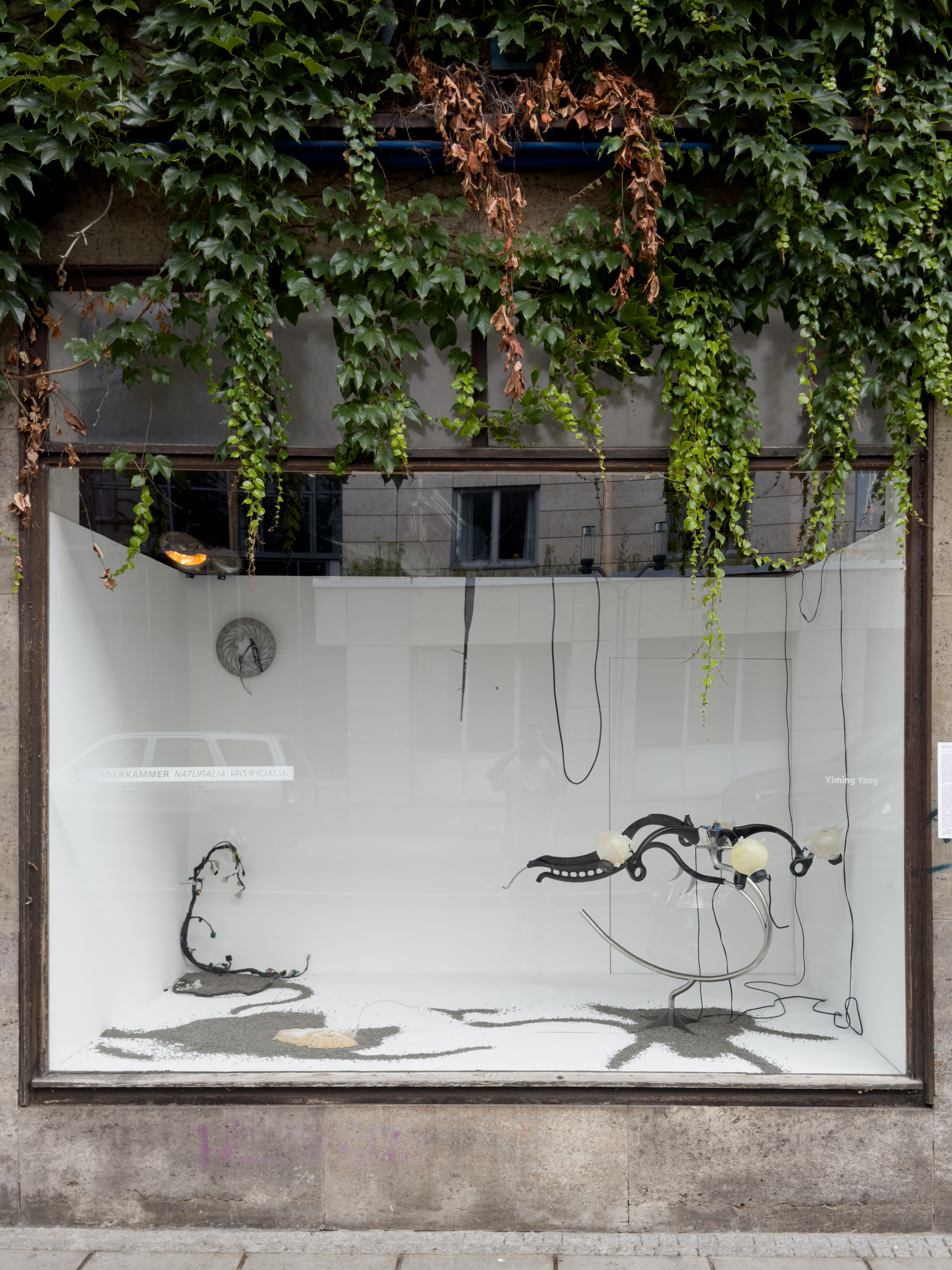In the natural world, sexual deception describes the tactics used by animals and plants to achieve their reproductive goals. Seemingly artificial forms in animals are indeed genetic, embodying a kind of primitive intelligence in animals and plants and an enduring way to preserve their species. In the human world, manmade machines present a similar tendency to possess forms of likeness to real human beings, which enables the two to co-exist in harmony. This series of work, by using disassembled industrial parts and machine-made materials to represent a system evocative of a living organism, investigates the complexities surrounding how we perceive behaviours of intelligence to be active and conscious, rather than passive and unconscious.
In her book “A Cyborg Manifesto”, Donna Haraway asserts that “[o]ur machines are disturbingly lively, and we ourselves frighteningly inert.” Technology and machines have exacerbated our desire for immediate gratification and for our work to be done for us, creating an environment in which we are deceived into believing that we possess real connections to machines and to each other’s virtual presence. Machines could be more alive than humans, with an increasing level of agency and freedom to restructure their bodies. When the reason for their creation is removed, they could potentially evolve into bodies without organs and even reproduce on their own. Furthermore, not only are we becoming like machines in capitalistic societies, but the machine we live with are also becoming more lifelike. Parallel to sexual deception in the natural world, technology may eventually achieve its success of deception when machines and humans become indistinguishable enough from each other. In the process of this technological evolution, as human beings, are we unconsciously getting addicted to or consciously escaping from the deception?
Intelligence such as the ability to perform sexual deception is embedded in animal behaviours. For example, the odd structures of treehoppers, a type of insect, serve as camouflage or an intimidating way to ward off predation. This potential can be seen as animals submitting to their genetic code to ensure survival. To improve our existence, we have created machines, which initially can be seen as a return to our body, to animality, to the intensification of a productive force. But as technology further advances, we begin to see a transformation of humans through strategies of mutation, hybridization, deception, and structuralisation. As we submit to our desire for technological advance, we are also going through metamorphosis. The pursuit of technology is parallel to the behaviours of animals, which display a certain degree of intelligence. However, it is uncertain if animals possess intelligence; they are believed to perform such behaviours only as a result of their genetic codes. The machines we create are also based on structure and strategies. The question, therefore, is, Do they actually possess intelligence, which might eventually enable them to preserve their own species, or are they just a reflection of our desire?
The exhibition features three life-size, low-tech mechanical installations made from artificial materials such as stainless steel, acrylic and electronic components. Each one is a chimera – a hybrid that simultaneously resembles a living organism and a biological machine at the same time. They represent the inherent connection between organic beings and inorganic bodies. Mechanical parts removed from their assigned environment and position in a mechanical system simulate changes in the life forms and become independently existing creatures, vaguely recognising their organic-looking, even humanoid forms.
